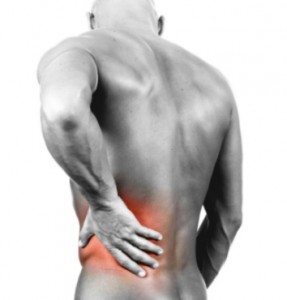
Treatment Options For Chronic Pain – What Does The Research Say?
As discussed in the previous article, chronic pain can manifest through very complex thought processes. This is a result of a wide variety of factors stemming from physical, psychological and cultural influences.
For this reason, there is not one single fix for chronic pain. However, its treatment is very much defendant on a combined approach.
This article will focus on the conservative management of chronic back pain. At the same time, it does not negating the importance of appropriate pharmaceutical and other interventions.

What Does The Research Say?
Exercise Therapy – The First Line Of Treatment
The current evidence suggests exercise is more effective than “GP care” for the reduction of pain, disability, and return to work . No one form of exercise (e.g. Aerobic, Mckenzie, conditioning exercise) appears to be superior to the other. A supervised and individualised exercise programme is, however, recommended over general exercise conducted individually. This is something that can be discussed and provided by a qualified physiotherapist following a thorough assessment of your back.
Studies comparing the effect of pilates-based exercises and usual back care have shown pilates to significantly reduce low back symptoms and disability in the long-term.
There is strong evidence showing that exercise therapy alone isn’t effective than conventional physiotherapeutic techniques (e.g joint mobilisations). Therefore, exercise therapy must be prescribed along side other treatment adjuncts.
Cognitive Behavioral Therapy
This form of psychosocial therapy assumes that maladaptive, or faulty, thinking patterns causes maladaptive behavior and “negative” emotions. (Maladaptive behavior is behavior that is counter – productive or interferes with everyday living). This treatment focuses on changing an individual’s thoughts (cognitive patterns) to change his or her behavior and emotional state. This allows them to partake in exercise and all activities of daily living.
Manual Therapy
Joint mobilizations should be considered as treatment in the short term management for chronic pain sufferers to increase function and decrease pain.
The research shows that joint mobilizations carried out in physiotherapy treatments is of equal effectiveness to analgesia, normal “GP care” and physiotherapy exercises in reducing symptoms.
Massage
Massage is not considered as an effective treatment option for chronic pain sufferers, but may be useful to treat the symptoms of muscle tightness post exercise.
Education
This is vital in in helping people understand that beliefs can alter and affect their recovery from pain. Pain should not been taken for granted, and a person should seek medical advice to decrease the amount of pain as soon as possible.
Education regarding pain, and understanding that pain is an unpleasant but subjective emotional experience, and therefore should not be used as a tool to measure the amount of tissue damage is vital.
Having less fear and anxiety will make a person more willing to return to functional activities and exercise allowing for recovery.
References:
O. Airaksinen, J. I. Brox, C. Cedraschi, J. Hildebrandt, J. Klaber-Moffett, F. Kovacs, A. F. Mannion, S. Reis, J. B. Staal and H. Ursin, et al (2006) European guidelines for the management of chronic nonspecific low back pain, European spine journal, vol 15: 193-300
Rydeard,R., Legar, A., Smith, D (2006) Pilates-based therapeutic exercise: effect on subjects with nonspecific chronic low back pain and functional disability : A randomized controlled trial, The Journal of orthopaedic and sports physical therapy, vol 36:474-484
Related Articles
- Chronic Pain: Altered Pain Processing Mechanisms And… It is estimated that 10-20% of the general population is affected by chronic pain. Studies regarding chronic widespread pain in…
- Coping With Pregnancy Related Musculoskeletal Discomforts The majority of musculoskeletal problems that arise during pregnancy can be prevented and treated with physiotherapy intervention. Individualized physical therapy…
- Shin Splints – Medial Tibial Stress Syndrome: What… Approximately 10-20% of all runners will experience shin splints or medial tibial stress syndrome (MTSS) once in their career. Apart…
- 3 Main Factors Affecting Chronic Pain In our previous article, the topic of chronic pain was introduced. We talked about what pain was, the types…
- Midportion Achilles Tendinopathy: Eccentric… Midportion Achilles Tendinopathy is one of the most common overuse injuries among recreational athletes with a prevalence of 11%. It…
